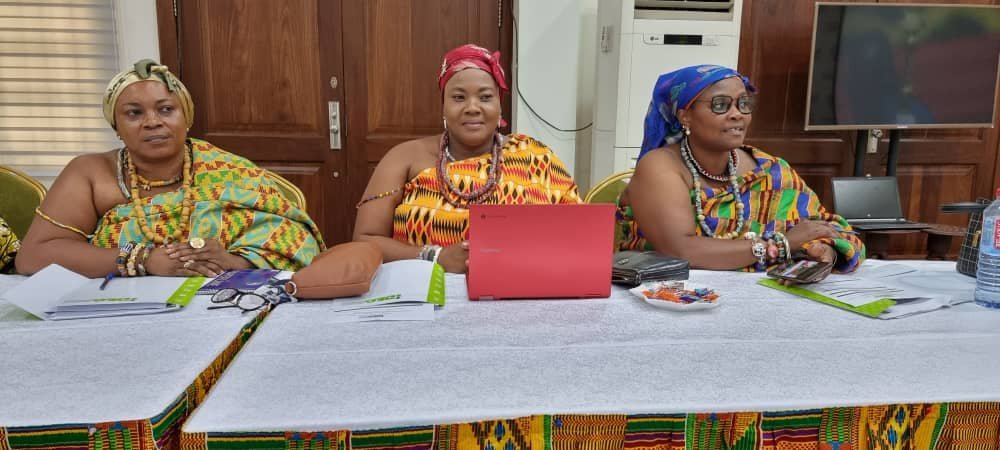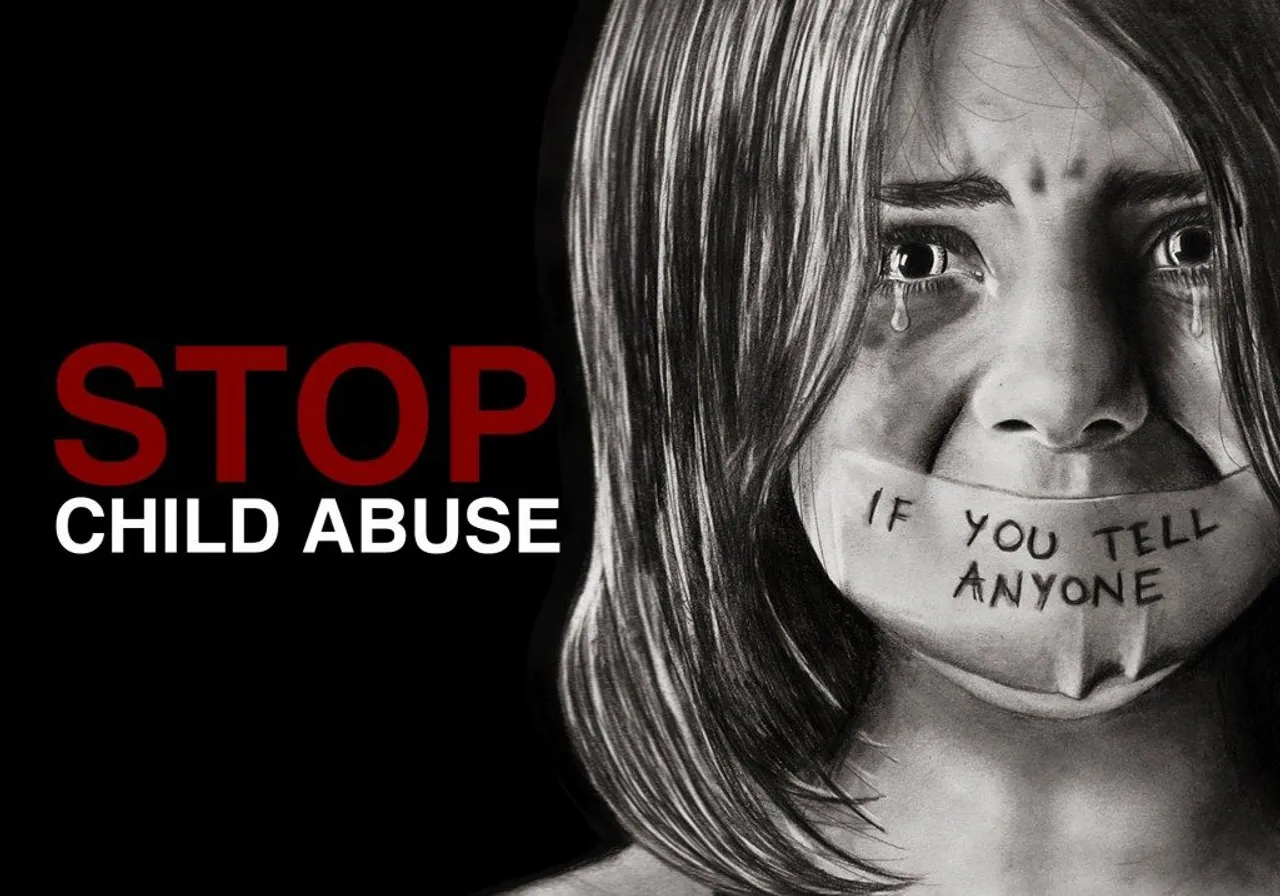Gender
Value of African beads and its importance in the Ghanaian society

Have you ever thought of the beauty of African beads and how it heightens the beauty of the body when worn? Or has it ever occurred to you why a king sits majestically in his palanquin with different types of beads around his neck, hands and legs during festivals and durbars?
How about the numerous beauty pageants which aim at projecting the African value through the contestants?
Well, the answer is so simple, these demonstrate the creativity, cultural heritage and the taste we have for our own products.
Typically, in Africa, and to be precise, Ghana, the history of Ghanaian beads dates back to ancient times when they were first used as the king’s currency for the exchange of slaves, textiles and alcohol.
Later on, they became popular in ancient times for the rituals of girls. Today, they are as valuable as foreign exchange earners, and serve as tourist attractions. The modern-day woman, both African and non-African, is rediscovering the beauty of these Ghanaian beads which have become popular today.
Colours and meaning
Speaking to Miss Elizabeth Acquah, a professional in the field of bead making, she explained that the colours of Ghanaian beads have meaning. She said, in certain parts of Ghana, white coloured beads evoke fertility; blue coloured ones are associated with purity; while golden beads are a symbol of wealth.
She further said, ‘Bodom’ beads are yellow with a diamond shape design of a darker colour such as blue and were traditionally produced to be worn exclusively by African chiefs. Once you know what the colours of your beads symbolise, wearing them becomes a personal experience.
But in today’s world, beads have become very fashionable and can be worn by anyone at any time to anywhere, depending on the function.
Today, the importance cannot be spelt out in our Ghanaian society as they play significant roles in projecting our cultural values.
Apart from it being worn on the waist, and worn by chiefs and royals, it can also be worn anytime to any occasion. It can go with nice African print dress or any other nice outfit to church, outdoorings, festivals, weddings and any event. Beads are also used in making foot wears, handbags, earrings and necklace.
Sexual Appeal
It is believed that a woman in waist beads is sexually appealing to men. Most African men love to see their women in beads. Most of them have also admitted that seeing a woman in waist beads turns them on. They love to play with it as their women lay in their arms or during sexual activities as well.
Some women also wear specific beads during sex to send a message to their partners. In the Ashanti and Krobo cultures of Ghana, large beads or bells are added to a woman’s waist beads once she is fertile so she makes noise when she walks to alert potential suitors and this serves as a symbol of femininity.
Body Shapers
Waist beads serve as a natural waist trainer for some women. Wearing of beads can easily tell an African woman whether she is gaining or losing weight. If you were to gain weight, the beads will sit higher on the waist or feel tighter, conversely, if you were to lose weight, the beads will feel loose and fall further down to the hips. Waist beads can be worn all day, every day.
Traditional Practices (Rites of Passage)
There is a belief that beads improve a woman’s curves. Hence, African baby girls are made to wear beads to enhance their curves and also to give them shape as they reach their adolescent stage.
Also, beads are used to mark family status, especially on special occasions such as rites of passage of girls to puberty called ‘dipo’ practised by the Krobos.
Beads can also convey identity and cultural significance. For instance, if a woman is married or a man is a warrior or an elder, the beads on them will indicate it. Large and colourful beads symbolise wealth and social status. Blue beads are thought to enhance fertility.
Healing and Meditation
Some people also believe that waist beads have some healing and protective charms that keep danger away. They are said to relieve people from stress, anxiety or relax the nerves during pregnancy.
Heritage and Pride
Beads are the fundamental part of the Ghanaian heritage. Not only do they testify of the vibrance of the Ghanaian creativity, they also play a significant role in the country’s history, rituals and culture. Sometimes, the waist beads are just a show of love for the Ghanaian and African heritage at large.
Maturity and Growth
For many communities, girls put on beads to signify their transition from adolescent into womanhood.
To conclude, beads play an important role in our Ghanaian society, so anytime you think of heightening your image in various ways, think about beads. And note that every African bead conveys pride, beauty, culture, power and identity.
By Jennifer Nyarko
Student, Ghana Institute of Journalism (GIJ)

Gender
Beyond the cross: The role of women in Easter story

Easter is here again and Christians all over the world are observing the death and resurrection of Jesus Christ, as described in the New Testament.
It also marks the end of the Lent season and is also a time of joy and celebration for many Christians worldwide.
It is therefore not surprising to see Christians organise conventions, crusades and picnics to commemorate the special occasion.
On Good Friday which is expected to be commemorated tomorrow, a section of Christians would wear black to signify the crucifixion of Jesus Christ.
Predictably, it would be all white on Sunday which is the resurrection to signify victory over death.
In this article, The Spectator would look at the role women played in the entire story about the death, burial and resurrection of Jesus Christ.
During the ministry of Jesus Christ, women such as Mary Magdalene, Mary, Martha, Joanna and Sussana played significant roles. They were devoted followers, witnesses, and provided financial support to Him, during his ministry.
At the cross, several women were present during Jesus’ crucifixion, including Mary Magdalene, Mary the mother of James, Salome, and Mary, the mother of Jesus.
Matthew 27:56 mentions that “many women were there beholding afar off, which followed Jesus from Galilee, ministering unto him.” Luke 23:27-31 and Mark 15:40-41 also refer to ‘many other women’ being present.
Women played significant roles in the events surrounding Jesus’ death, burial, and resurrection.
In ancient Jewish culture, women’s testimony was often viewed with skepticism or dismissed altogether. A Jewish historian Josephus noted that women’s testimony was not admissible due to perceived flaws in their character.
This societal bias is evident in the Gospel accounts, where women’s roles as witnesses to the resurrection of Jesus were crucial, yet potentially problematic given the cultural context.
The resurrection account is built on the testimony of women and it best explains the central role of women in the Easter story.
In each of the four gospels of the Bible, (Matthew, Mark, Luke and, John), the women- Mary, Mary Magdalene, were the first to see the risen Jesus. It is their testimony that sends Peter and John to the empty tomb.
The role of women in the death and resurrection of Jesus Christ cannot be downplayed, bringing to light how women can be agents of change and transformation in the face of adversity.
Again, the role of these women in the events surrounding the suffering, death and resurrection is a reminder of the contributions that women can make to the life of the church and recognise the important roles women play in various aspects of life including politics, education and business.
The role of women

In Mark 14: 1-9, it was a woman who anointed the head of Jesus in preparation for his burial. In Matthew 27: 19, a woman urged her husband (Pontius Pilate) to stand against the power of the mob and spare an innocent man’s life.
Again, women were the ones that stood at the foot of the cross as Jesus breathed his last in Matthew 28:1, Mark 16:1-6 and Luke 23:55-56 where women were the first to arrive at the tomb to anoint the body of Jesus.
Also they were the first to be entrusted with taking the good news of Christ’s resurrection to the disciples and were the first to witness the resurrection as captured in Matt 28: 18 -20.
Significance
According to Christianity.com, the role of these women speaks volumes of how much God loved, trusted and rewarded the women. It also speaks to the many ways God is willing, eager and able to use both men and women to advance his Kingdom.
In April 2023, a research paper on ‘The role of women in the events surrounding the suffering, death, and resurrection of Jesus Christ,’ states that women can be agents of change in a society that oppresses and marginalises them.
It said the fact that women played a key role in the events surrounding the suffering, death, and resurrection of Jesus was an example of how they can effect change and transformation.
“The role of women in the events surrounding the suffering, death, and resurrection of Jesus Christ can have significant implications for national development.
One way in which this can be done is by recognisng and valuing the contributions that women make to society,” it said.
The paper said just as Jesus valued and respected women in his ministry, it is important for society to recognise the important role that women play in all areas of life, including politics, business, and education, adding that this can be achieved through policies that promote gender equality, equal opportunities, and the protection of women’s rights.
Just as the women in the Gospels were leaders and co-workers in the early Christian community, women today have the potential to be leaders in their communities, contributing to the growth and development of their nations.
Providing education and training opportunities for women can help them develop their skills and abilities, and empower them to take on leadership roles in society.
It added that the role of women in the events surrounding the Easter story provides important lessons that can be applied to national development by recognising and valuing the contributions of women, promoting their education and empowerment, and encouraging their participation in all areas of life.
Society can work towards promoting gender equality and uplifting women in all areas of society. This is a powerful reminder that God can use even the most marginalised and overlooked members of society to bring about his purposes.
By Esinam Jemima Kuatsinu
Gender
Betrayal of trust: Understanding effects of abuse and assault on children

Mostly sexually abused victims are often abused by people they trust which can include family members, friends, acquaintances, or authority figures.
This makes it difficult for victims and the guardians to report the abuse or seek help as they may feel a sense of loyalty or obligation to the perpetrator.
Due to this sense of loyalty, many of such cases are either not reported to the police and are sometimes either settled at home with a little token as compensation or without it at all.
A typical case currently is that of Ransford, a 16-year-old footballer who is said to have been allegedly sodomised by the coach of his club, Siano Soccer Academy.
Unfortunately, Ransford died at the Komfo Anokye Teaching Hospital, after battling with severe illness which was as a result of the sexual abuse he had endured for the past three years.
Many of such cases occur and often remain hidden because of the person who committed the crime and also because victims do not believe the justice system.
Abuse of trust can have profound impact on victims, making them feel vulnerable, betrayed and powerless.
The Domestic Violence and Victims Support Unit (DOVVSU) exist to provide free services to members of the public; protect the rights of the vulnerable against all forms of abuse be it physical, sexual, emotional and psychological, socio-economic, or harmful cultural practices; establish an effective database for crime detection, prevention and prosecution.
The Unit also refer victims for medical services and specialised help to clinical psychologists; social workers from the Department of Social Welfare and counsellors attached to the Unit.
In February 2015, the government of Ghana approved its new Child and Family Welfare Policy which aims at preventing and protecting children from all forms of violence, abuse, neglect and exploitation.
The effects of sexual assault on children can have devastating, long-lasting and profound effects on the lives of victims and their loved ones.
These people abuse the trust to sexually exploit or assault minors. They groom, coerce, and deceive children and teens into committing sexual acts in person or online.
A report by the Ghana Statistical Service 2011 states that over 90 per cent of children report having experienced physical violence, both at home and in the school environment.
A paper on culture and nondisclosure of child sexual abuse in Ghana on behalf of the American Bar Foundation and authored by Kofi E. Boakye said the concept of patriarchy and its relation to rape and violence against women in general was given greater prominence.
It said further to the concept of patriarchy, and its excesses are false beliefs about (child) sexual abuse and its victims, also likely to negatively influence the disclosure of child abuse.
According to the paper, culture remains a crucial site for the construction and perpetuation of these misconceptions or false beliefs.
United Nations Childrens Fund (UNICEF)
According to the UNICEF the financial burden of child abuse in Ghana was estimated at more than USD 200 million per year or one per cent of Ghana’s GDP.
The estimated total number of children who have been physically or emotionally abused was noted at 3.4 million in Ghana.
According to UNICEF, issues that impede the prevention of violence against children include social norms, accepting and promoting the use of violence in schools, homes and other institutions as an effective way to manage the behaviour of children, laws permitting the use of “reasonable” punishment by parents against children.
Also insufficient allocation of resources to prevention and response programmes in all spheres, inadequate capacity of key government actors – including social workers, teachers, police, prosecution and courts – to prevent and respond
Other factors include lack of timely and continuous specialised management of child protection cases of violence, cultural practices inhibiting the ability of survivors of violence to come forward, and poor quality of care given to survivors of violence, which may put them to greater risk.
In 2015, UNICEF and its partners produced a Child Protection Community Facilitation Manual and toolkits containing games and activities that are designed to stimulate community reflection on child protection issues and encourage local action.
In November 2017, UNICEF with support from the Government of Ghana launched the ‘Ghanaians Against Child Abuse’ (GACA) campaign, which runs in line with the government’s Child and Family Welfare and Justice for Children policies that are helping to strengthen the child protection system in Ghana.
The campaign is using various channels including social media, traditional media, mobile theatre to create awareness on child abuse issues whilst mobilising national support to provide a safe and protective environment for children.
It is anticipated that this movement will help change the narrative of how Ghanaians protect their children.
Breaking the silence around sexual abuse and assault is crucial to preventing crimes and supporting victims.
Talking about assault has its advantages although it might be difficult for the victims to identify them.
Breaking the silence, victims talking about their experience, sharing their suffering, understanding what happened to them and the impacts on their lives and establishing relationships based on trust can contribute to giving them tools to regain their confidence.
Also education plays a crucial role in preventing any form of child sexual abuse when a child is educated on the effects of sexual abuse it arms then as well as their parents, trusted adults and educators with crucial information to keep kids safe either at home or online.
It empowers the children and their guardians with the knowledge and tools they need to protect themselves.
Also, the fight against child abuse or assault transcends borders and requires collaboration between law enforcement, non-governmental organisations, parents and educators, and the public at large.
There is therefore the need for partnerships to amplify the impact of abuse and assault on children and need for a coordinated response to fight a crime of child sexual abuse.






